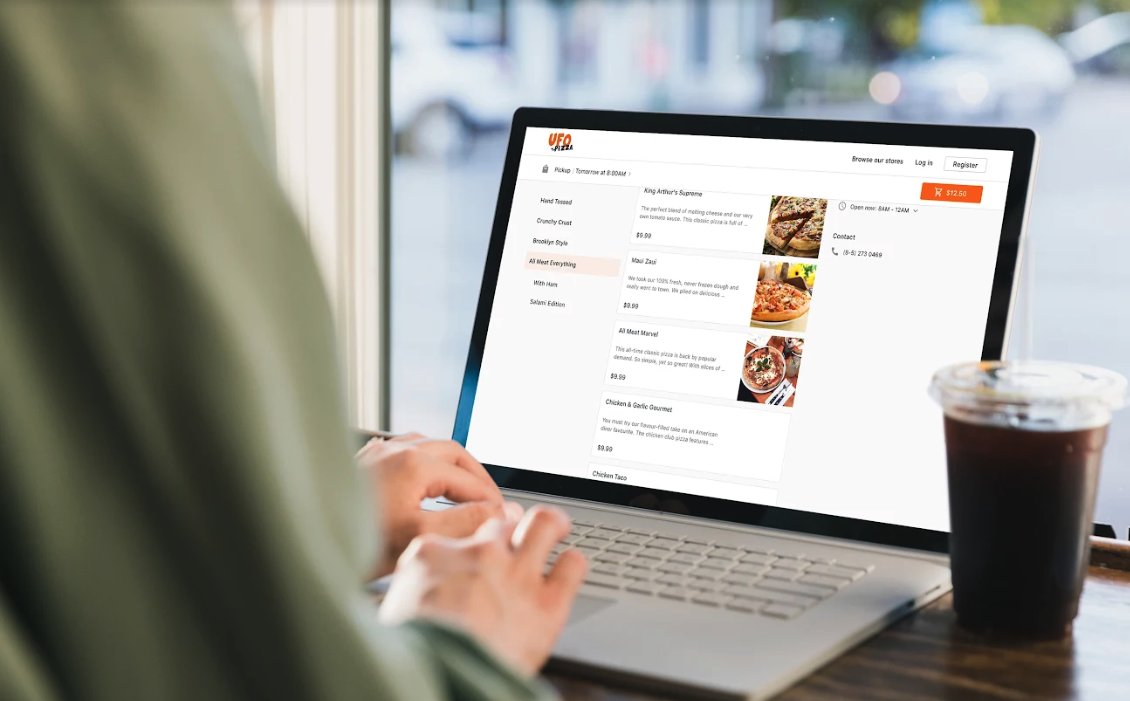Call Sales: +1 (833) 437-3835
Call Sales: +1 (833) 437-3835
Sydney Kida | May 25, 2022 |

Your menu determines whether someone places an order from you. Chances are your menu is one of the first real points of contact you’ll have with a new customer. Diners might browse your menu online whether they want to place an online food order or visit you for an in-person dining experience.
Contrary to most menu guides, it’s not enough to simply write down a list of your dishes. You need a modern fine dining menu design to send the message that this is the best food in town.
Whether you’re building a menu from scratch or revamping your business, here’s what you need to know about menu names, menu heading ideas, and more.
What are the aspects that make up a worthwhile menu? While every menu will differ, several elements make up a successful one.
Here are the five considerations for developing any menu:
Menu guides break down the elements into these five categories because they all contribute to increasing the allure of your brand. Ultimately, menus are supposed to be informative and appetizing.
Pay the same attention to menu names as you did to naming your restaurant. Creative names for menu items, food application names, and the overall name of your menu must fit into your branding strategy.
If you’ve got a theme running through your restaurant, it makes sense to match it up with each of your signature dishes.
Follow these tips for coming up with innovative menu names.
Names for menu items may look good on paper, but your customers will be reading that name out loud. When confirming an online order, your staff will also repeat it back to them. Sound out each of your name ideas.
Every item name should roll off the tongue. Clunky, awkward-sounding names are intimidating and memorable for all the wrong reasons.
Think of some of the most famous names and how they sound when said. McDonald’s has the Big Mac, and Burger King has the Whopper. They’re simple, easy to remember, and infinitely marketable as a flagship product.
Some restaurant owners make the mistake of getting too fancy with their names. None of your menu items should have a name that opts for branding over clarity.
Every item must spell out what each dish is on a general level. You can include descriptions of the specifics, but the primary name should be a clear indicator of the type of dish.
The names on menus share similarities with competing restaurants worldwide. There’s nothing wrong with looking up the competition to see what they’re doing.
Grab the menus of the local competition and browse them. What do they all have in common?
Take what your competition has done to inspire your own naming conventions. Don’t steal directly but borrow.
Are you revolutionizing your menu and adding some new items to your selection?
Reach out to your customers in person and on social media. Turn the exercise into an interactive marketing campaign. It’s a tremendous opportunity to engage your customers and let them be a part of your restaurant’s story.
Finally, take the Keep It Simple, Stupid (KISS) approach. Sometimes a cheeseburger and fries is just a cheeseburger and fries.
You’ve got plenty of other parts of your menu to use for branding. If you can’t think up creative names for a food menu, just tell it how it is. Your customers will appreciate it.
Menu guides are an excellent starting point for developing a restaurant menu. Every element must play off each other to create an enticing experience.
Here are some additional bonus tips for creating a menu that sells your restaurant brand:
Your menu should never be an afterthought. It’s the single most important piece of branding there is. When compiling a menu, you need to constantly track what’s being ordered, your margins, and an item’s popularity.
Revel’s cloud-based POS is cutting-edge automation incarnate. Create a data-driven business and compile a menu that is appealing and guarantees a profit for your business.
To learn more about how our POS can streamline your business, request your free demo now.